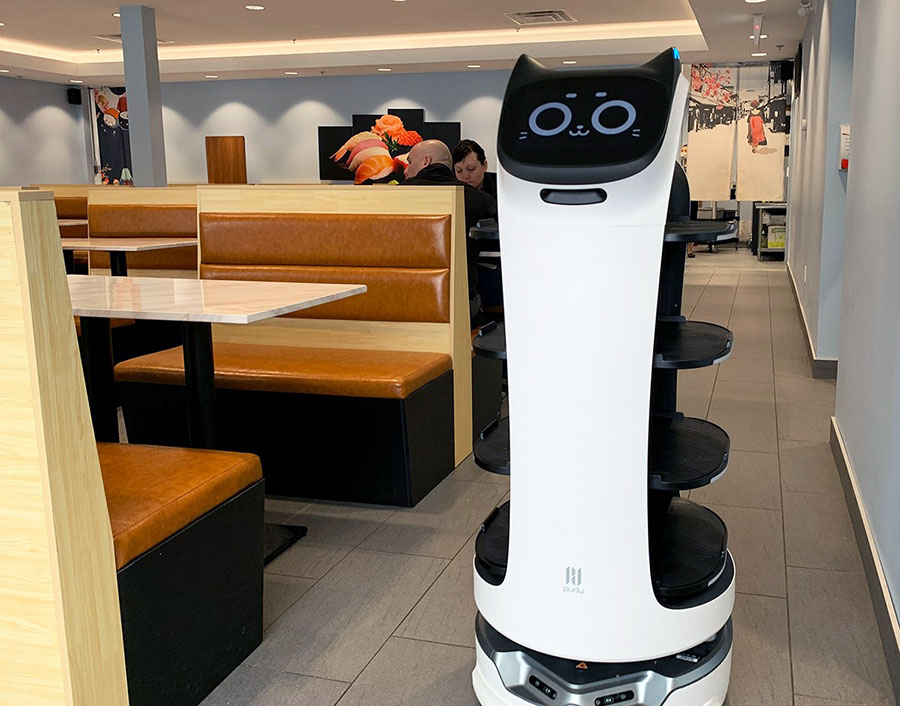Recruiting and retaining staff has long been one of the biggest challenges for foodservice operators, and COVID-19 has upped the intensity. Public health restrictions, lockdowns, loss of employee positions, uncertainty about job security and apprehension around health and safety practices are all factors that have turned up the HR heat.
In its Q3 2021 Restaurant Outlook Survey, Restaurants Canada reported 93% of respondents are contending with a shortage of workers, and 50% say they are struggling with a significant staffing shortage. Three-quarters of respondents said the labour shortage has put more pressure on owners and management level staff to work more hours. Seven out of 10 respondents said they are reducing their hours of operation. Where they can afford to, 63% said they are raising wages to entice staff to work for them.
The crunch is especially acute in back-of-house, notes Jeff Dover, principal at fsSTRATEGY Inc. “Enrollment is down in culinary programs across Canada, so help isn’t on the horizon, and now is especially the time for operators to be innovative.”

“Minimum wage increases are forcing the industry to restructure operating budgets and operations as a whole. Operators are competing with other industries who are offering higher pay rates.”
Laura Traynor, district manager for ADP Canada
Compensation is becoming a challenge for all industries, and especially in foodservice. “Minimum wage increases are forcing the industry to restructure operating budgets and operations as a whole,” says Laura Traynor, district manager for ADP Canada. “Operators are competing with other industries who are offering higher rates of pay even for those with little to no work experience or post-secondary education.”
By stepping up their recruiting, hiring and retention game, restaurant operators can successfully compete for labour and get their restaurants running at peak efficiency. By taking a page from the gig economy playbook, restaurants can lure back workers who might be otherwise enticed by platforms like UberEats and DoorDash by offering flexibility and the added sweeteners of benefits.
“It’s important that operators continue learning and staying ahead of trends,” ADP’s Traynor says. “Employees will feel safer and more likely to stay if they know their employer is on top of the latest legislation and health and safety regulations.”
The wage challenges for restaurant owners
Wages are on the way up right across the country, and some restaurant operators are paying much more than minimum wage. One of them is Alex Moore, owner of Bampot House of tea and Board Games, in Toronto. He pays his employees $22.50 an hour before tips. “I’ve been working in this business for a long time, and I honestly feel like a liveable wage is the bare minimum I can do. I don’t want people who work for me to struggle. So I’ve made the numbers work.”
Moore says paying a liveable wage helps to improve morale and builds loyalty. He is also looking at instituting a salary grid and profit sharing with his three employees. “I’m running it tight, but I want to make it happen because it’s the right thing to do.”
The increase of minimum wage has created a domino effect across this and many other industries, ADP’s Traynor says. “With new employees being hired at a higher rate than before, this puts pressure on employers to increase the rate of more tenured employees in order to keep compensation structure fair.”

“Signing bonuses and retention bonuses and being flexible with scheduling can help with recruitment and retention.”
Jeff Dover, principal at fsSTRATEGY Inc.
In many markets, offering minimum wage is not enough, and many employers are offering well over that to retain talent. “Applicants know they can get wages at more than minimum wage and are not settling,” fsSTRATEGY’s Dover says. “Signing bonuses and retention bonuses and being flexible with scheduling can help with recruitment and retention.”
Top tips to recruit and retain hospitality workers:
- Treat staff like the valuable assets they are
- Pay more and increase wages as quickly as you can
- Be flexible on scheduling and time off
- Offer signing and retention bonuses
- Customize benefits to meet employee needs
- Provide rewards, recognition and opportunities for career advancement
- Offer mental health support
“All of this comes at a cost to operators but there is, at least in the short term, a willingness amongst consumers to accept price increases,” Dover adds. “Adjust operating hours if you must and close when not profitable. With a five-day week, one core team can work full time with two days off.”
Use technology to empower your restaurant staff
Third-party solutions like ADP’s HR Assist can help operators stay on top of and properly apply rapidly changing government policies. “Implementing technology solutions to streamline scheduling and management of paid time-off requests from employees makes navigating the unknowns more efficient,” says Shubh Mann, director of sales – channels at ADP Canada. “Giving employees the power to view their schedules in advance, request days off and swap shifts empowers them to have more control over their work-life balance and in the long run can help lower employee turnover.”
Shubh Manns top tips for restaurant operators:
- Take advantage of data-analyzing technology to effectively make decisions when scheduling staff so you do not over- or under-staff
- Outsource day-to-day admin tasks (e.g. payroll, HR, time and labour management) to free up time to focus on people and operations
- Streamline the onboarding process
- Use HR portals to efficiently create job descriptions, onboarding guides etc.
- Post jobs on sites such as Zip Recruiter to avoid looking through hundreds of résumés and posting manually on several locations to drive enough traffic
- Revaluate your current HR setup to ensure HR support is in place for your employees
Employ smart scheduling in your restaurant
“By reviewing your historical sales data, you can anticipate staffing as much as possible and plan accordingly,” Mann says. “If possible, get to know a bit about your employees’ lives outside of work and schedule them accordingly. For instance, a parent of three might be a better fit to handle the lunch rush and single students will likely prefer the evening shift.”
- Make scheduling controlled, organized, and easily accessible for staff
- Be prepared to quickly onboard with rapid training programs
- Activate a scheduling app that allows staff to show their availability, request days off, easily view their schedules, and swap shifts
- Post schedules in advance to help smooth out any bumps with seasonal ups and downs
- Establish clearly understood guidelines for time-off requests
- Where possible, ensure staff take paid time off in advance of holiday seasons and busy times to ensure they are well rested and ready to handle the workload

Try robot retail to alleviate staffing shortages
Robotics and artificial intelligence (AI) have been making strides across every industry and the restaurant and hospitality sectors are no exception, reports Restaurants Canada. Robot retail is making its way into dining experiences – from sanitation and disinfection to serving and hosting. Brands like GreenCo Robots are leading the way with robotics applications in restaurants.
Headed by engineer Liang Yu, the Edmonton-based company has about 40 robots in use across Canada. “The idea is not to replace people completely,” he says. “The robot is an assistant for the labour-intensive and repetitive work like busing and delivering water.”
Kitty Tong, owner of Golden Ocean Seafood Restaurant in Vancouver, says they’ve been using their robot to help serve food and alleviate some staffing issues during the pandemic. The robot has also attracted interest from regular customers and others who have heard about it by word of mouth and through media reports. “Both adults and children like to take photos with ‘Bella.’ They think the robot has a very special and fresh feeling.”
GreenCo robots range in cost from $16,000 to $30,000, depending on the model, and the company offers a three-year lease-to-own program and a one-week trial.



